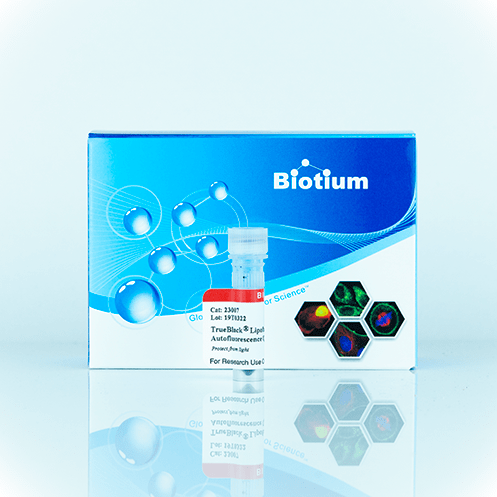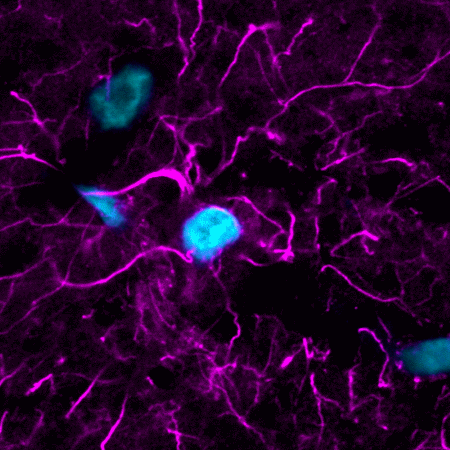TrueBlack® Lipofuscin Autofluorescence Quencher
This unique reagent quenches lipofuscin autofluorescence in tissue sections for immunofluorescence staining and can also help to reduce autofluorescence from other sources like extracellular matrix.
Wishlist updated! View wishlist
Product Description
TrueBlack® Lipofuscin Autofluorescence Quencher, 20X in DMF, is a novel reagent that quenches lipofuscin autofluorescence in tissue sections for immunofluorescence staining.
- Eliminates lipofuscin autofluorescence
- Reduces autofluorescence from non-lipofuscin sources
- Doesn’t cause high background, unlike Sudan Black B
- Can be used before or after immunofluorescence staining
- Clears the way for fluorescence imaging of human and aged animal tissues
TrueBlack® effectively eliminates lipofuscin autofluorescence in tissues like human and mouse brain and retina (see Figs. 1-3 and TrueBlack® References). Lipofuscin consists of highly autofluorescent granules of oxidized proteins and lipids that build up in the lysosomes of aging cells. Lipofuscin granules fluoresce brightly in all channels used for fluorescence microscopy, and accumulate in a variety of cell and tissue types with age. Consequently, imaging of specific immunofluorescence signal in certain adult human tissues or aged animal tissues can be virtually impossible unless methods are employed to quench or mask lipofuscin fluorescence.
TrueBlack® quenches lipofuscin with less background than Sudan Black B
Traditionally, Sudan Black B has been used to quench lipofuscin autofluorescence by incubating tissue sections with the dye after immunofluorescence staining. However, while it masks the autofluorescence from lipofuscin, Sudan Black B also introduces uniform non-specific background fluorescence in the red and far-red channels (Fig. 1), limiting the use of fluorescent dyes in those wavelengths. Now Biotium has developed TrueBlack® as a superior alternative to Sudan Black B. TrueBlack® quenches lipofuscin fluorescence with far less increase in red/far-red background fluorescence (Fig. 1). TrueBlack® treatment can be performed before or after immunostaining. It is rapid, simple, and has minimal effect on signal from fluorescent antibodies or nuclear counterstains, thus preserving the signal-to-noise ratio of the immunostaining (Figs. 2-3).
TrueBlack® can reduce autofluorescence from sources other than lipofuscin
TrueBlack® also can reduce autofluorescence from other sources, such as collagen, elastin, red blood cells, and general background fluorescence. It is not as effective at quenching these sources of autofluorescence as it is for lipofuscin, but it can improve background in human and non-human tissue types (Figs. 4-5). TrueBlack® also has been used to quench background fluorescence on polycarbonate filters used as cell supports for imaging cytometry.
TrueBlack® Lipofuscin Autofluorescence Quencher belongs to our TrueBlack® line of background reducing agents for fluorescence applications, which includes TrueBlack® WB Blocking Buffer Kit for western blotting, and TrueBlack® IF Background Suppressor System (Permeabilizing) for blocking non-specific immunofluorescence staining. Also see our other accessory products for immunofluorescence staining and other applications.
TrueBlack® Plus: A unique lipofuscin quencher with lower far-red background than original TrueBlack®
Biotium has also developed TrueBlack® Plus (catalog no. 23014), a next-generation lipofuscin quencher that offers even lower far-red background than the original TrueBlack® (catalog no. 23007). TrueBlack® Plus is also the only lipofuscin quencher that can be used in aqueous buffer instead of 70% EtOH, allowing longer incubation times for thick tissue samples without shrinkage.
TrueBlack® quenches lipofuscin with less background than Sudan Black B

TrueBlack® treatment can be performed before or after immunofluorescence staining

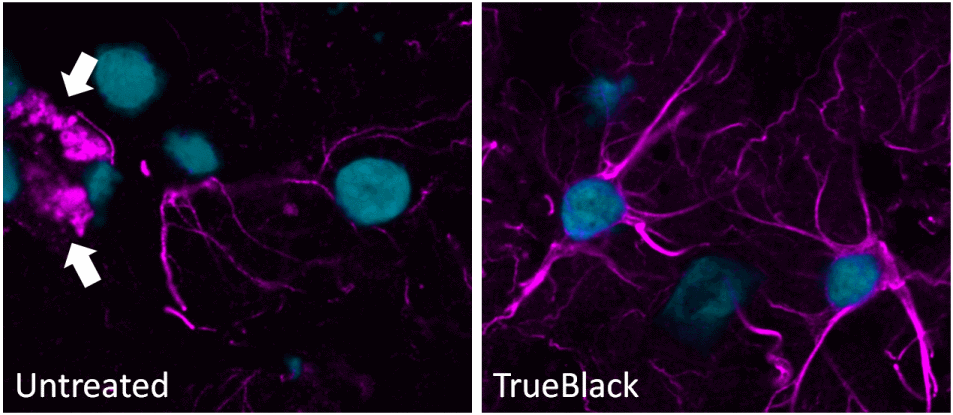
TrueBlack® can reduce autofluorescence from sources other than lipofuscin
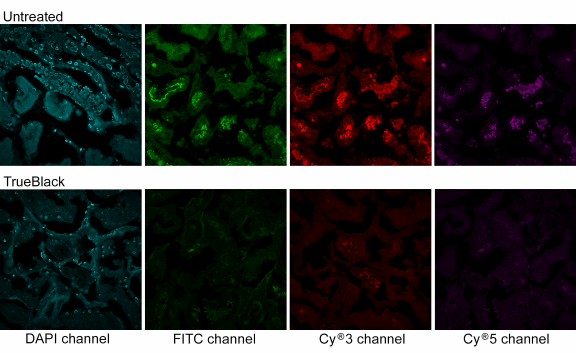
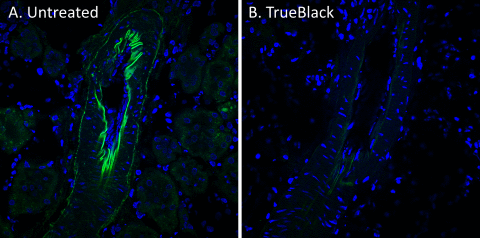
References
Download curated list of TrueBlack® References

